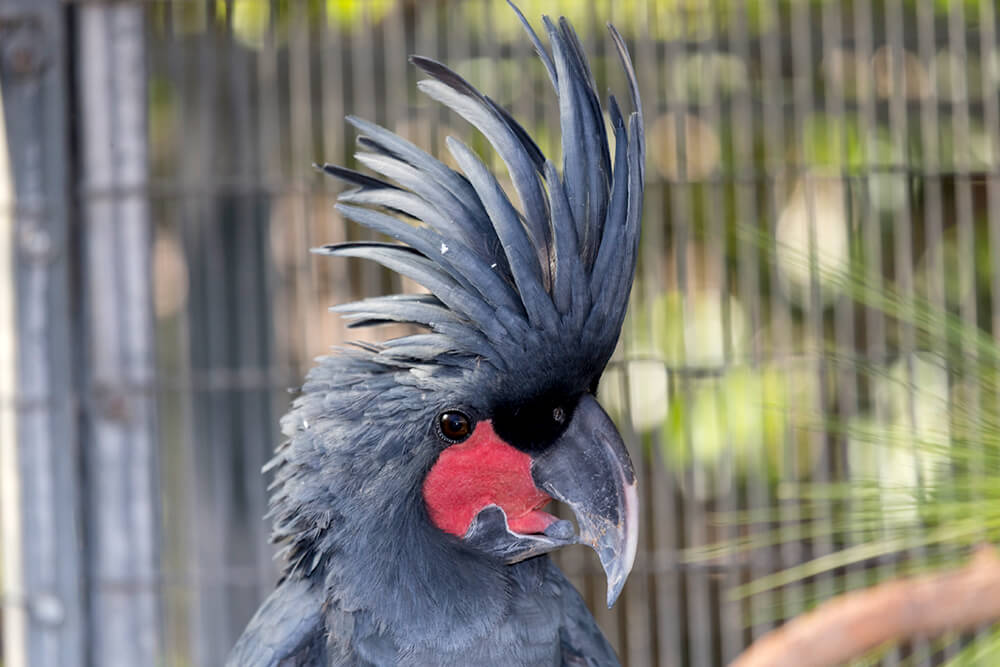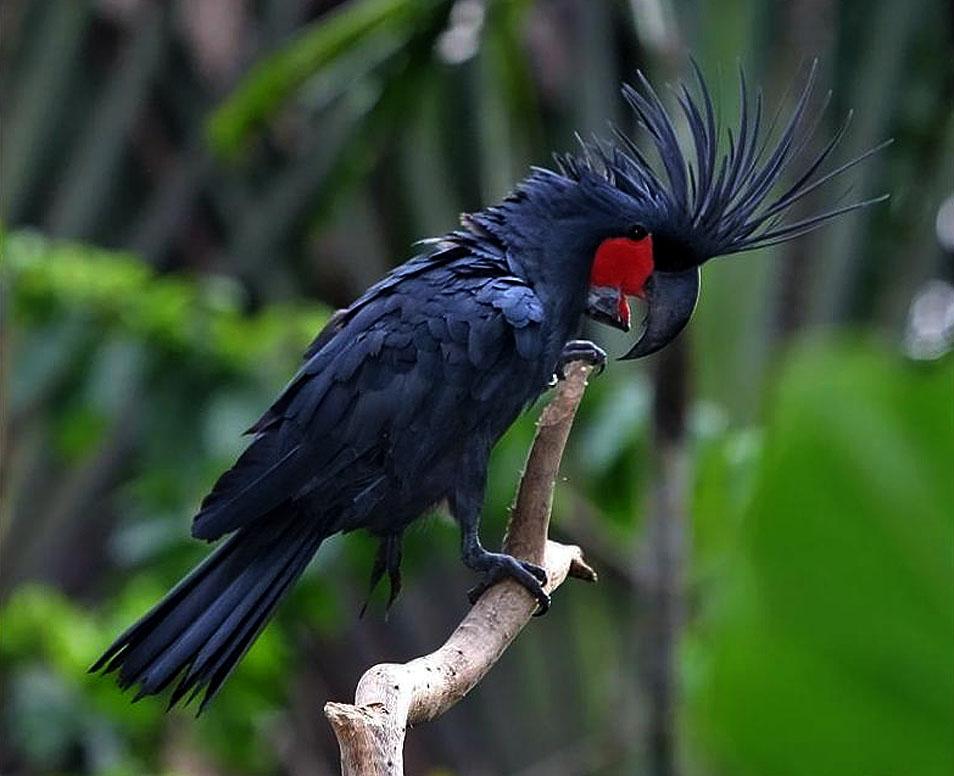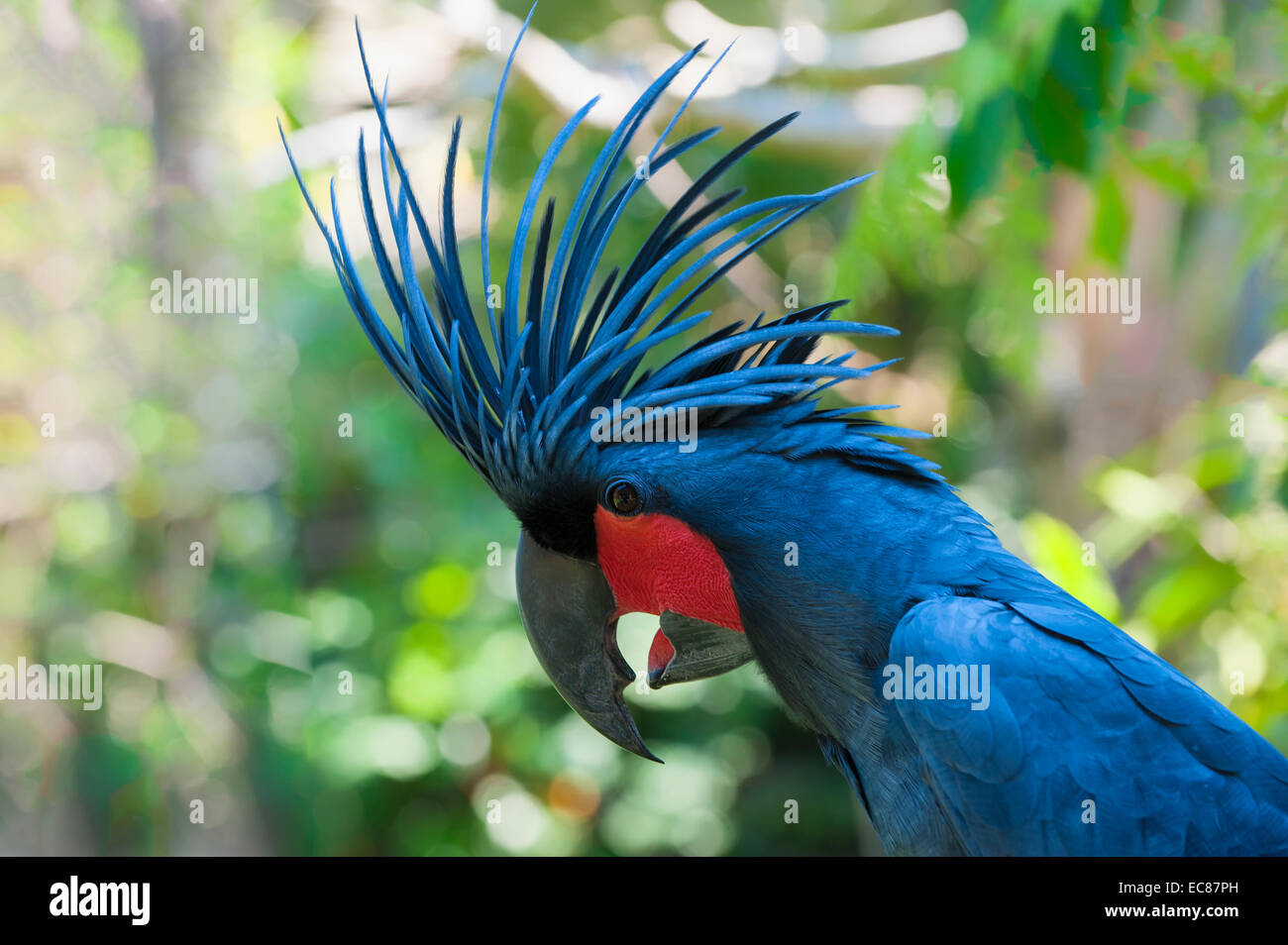

Surveys for these trees are crucial for management purposes. Some favourite species are Darwin stringybark, pandanus palm, black bean, beach almond, cocky apple, nonda tree and kanari tree. Within Australia, the iconic Palm Cockatoo Probosciger arterrimus macgillivrayi occurs only on the Cape York Peninsula, Queensland, has recently been listed as Endangered, and requires large, old hollow-bearing trees for nesting. They may measure up to 60cm (23.5in) long and weigh 1kg (2.25lbs). They mainly eat nuts, fruits, seeds and berries. The palm cockatoo is the largest of the worlds 18 cockatoo species. He sings, twirls and drums rhythmically against the tree, often using a percussion instrument, a stick or seed. This bird’s nesting behavior is unique for cockatoos because they construct a platform made of twigs within its nest cavity. What Does Palm Cockatoo Eat Palm cockatoos can be seen eating both on the ground and in the canopy, often in early mornings. A male palm cockatoo puts on a musical mating display from trees in his territory.Their erectile crest also communicates mood. Palm cockatoos can also communicate by stomping noisily on their perch, drumming against a tree with sticks or nuts, as many as 200 times, usually for the purpose of advertising territorial boundaries.They also make grunts, mournful/wailing cries, screeches, whistles, and other noises.

When alarmed, they make a sharp, harsh screech. The most common call is the contact call, a whistle of two syllables.
PALM TREE COCKATOO PATCH
The birds can reveal or hide the cheek patch by changing the position of their facial feathers. When highly stressed the patch will change to a pink/beige, and when highly excited it changes to yellow. The bare red patch on the Palm cockatoo’s cheek can change color, depending on their health or stress level.

This powerful bill means that palm cockatoos can eat very hard seeds and nuts that are difficult for other species to deal with. The Palm cockatoo has the largest bill of any parrot except for the hyacinth macaw.Terms and conditions of this 'Adopt Our Animals' Program are the absolute discretion of Melaka Butterfly & Reptile Sanctuary with rights to alter at all times.Melaka Butterfly & Reptile Sanctuary reserves the right to alter the operation hours of the Sanctuary or its exhibits under any circumstances.No refund will be entertained on any amount donated to 'Adopt Our Animals' Program.The palm cockatoo will make its home in rainforests, dense savanna and woodlands. Wind chimes produce sounds when the wind blows and the sounds frighten cockatoos. Hanging wind Chimes and other noisy objects is also a simple way of protecting fruit trees. Hang Wind Chimes or Ultrasonic Repeller on Fruit Tree. In Australia the palm cockatoo is found only in Queensland in the upper portion of the Cape York Peninsula. This method is the cheapest way to keep them away. Melaka Butterfly & Reptile Sanctuary does not provide tax exemptions for this 'Adopt Our Animals' program. Palm cockatoos can be found throughout Australia and New Guinea along with a range islands around this region.All 'Adopt Our Animals' proceeds are gifts made voluntarily to Melaka Butterfly & Reptile Sanctuary (Taman Rama-rama & Reptilia Melaka), with no conditions imposed.Visit is allowed all year round, during daily operation hours 8:30am - 5:30pm.Unpresented tickets upon the expiry date shall be considered lapsed and unusable without any refund.The privilege shall be extended to non-MyKad holders. Visiting adult and child (3 - 12 years old) shall be entitled to utilise the tickets.2 tickets to Melaka Butterfly & Reptile Sanctuary (MBRS).The cockatoo builds the nest in a tree hollow, usually in the trunk, lined with. Adoption Certificate (Adoption below RM50 is entitled for e-certificate only) Palm Cockatoo is known for best talking bird, like human-like sound, Hello. The palm cockatoo is only found at the top of Cape York in far north Queensland and drums on trees by fashioning its own musical instruments including sticks.


 0 kommentar(er)
0 kommentar(er)
